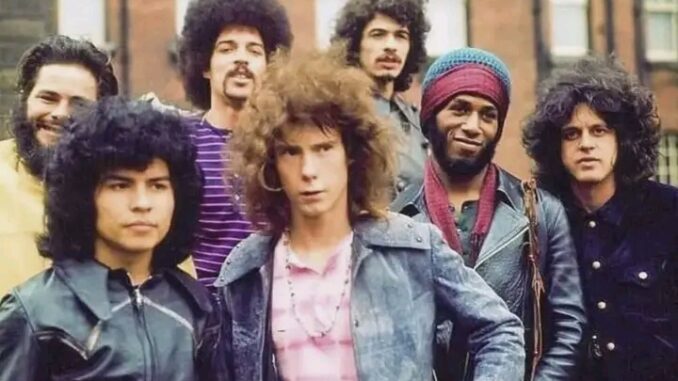
In the vibrant tapestry of rock history, few bands have left a mark as distinctive and powerful as Santana. At the heart of this impact is the classic lineup that propelled the band to fame during the late 1960s and early 1970s. Recently, renewed attention has been given to the groundbreaking contributions of the original Santana ensemble, including Carlos Santana, Gregg Rolie, Michael Shrieve, David Brown, Mike Carabello, José “Chepito” Areas, and Alberto Gianquinto. Their unique blend of Latin rhythms, rock energy, and jazz improvisation not only redefined musical boundaries but also bridged cultural divides during a transformative era in American music.
Carlos Santana, the band’s namesake and lead guitarist, is widely recognized for his expressive, sustain-heavy tone and fusion of bluesy solos with Afro-Latin percussion. But Santana’s sound was never just about Carlos. Keyboardist and vocalist Gregg Rolie brought soulful organ textures and gritty vocals, particularly evident in hits like “Black Magic Woman” and “Evil Ways.” His playing gave Santana its psych-rock roots while still leaving space for percussive exploration.
Drummer Michael Shrieve, only 20 years old when he performed at Woodstock, became one of the festival’s standout musicians. His dynamic, extended solo during “Soul Sacrifice” is still cited as one of rock’s most iconic drum performances. Bassist David Brown held the rhythm section down with smooth, melodic bass lines that anchored the band’s expansive sound.
What truly set Santana apart was its dual percussionists—Mike Carabello on congas and José “Chepito” Areas on timbales and various Latin instruments. Their fiery interplay brought authentic Afro-Cuban flavor into the rock mainstream, a rarity at the time. The inclusion of these traditional instruments into a rock setting helped pave the way for future genre-blending in music.
Alberto Gianquinto, often overlooked in popular accounts, contributed on piano during Santana’s early days and recordings. His jazz-influenced style added harmonic depth, particularly during live performances, and complemented the band’s polyrhythmic foundation.
Together, this ensemble reached a pinnacle of creativity with the release of the band’s second album, Abraxas, in 1970. Featuring iconic tracks like “Oye Como Va” and “Samba Pa Ti,” the album solidified Santana’s legacy and demonstrated that Latin-infused rock could achieve both critical and commercial success. The group’s appearance at Woodstock the year before had already captured the world’s attention, signaling a new direction for rock music—one that was more inclusive, diverse, and rhythmically complex.
More than 50 years later, the music of this lineup remains as influential as ever. Their fusion of cultures, instruments, and genres continues to inspire generations of musicians and fans alike. With recent tributes, reissues, and documentaries revisiting this golden era, the legacy of Gianquinto, Carabello, Rolie, Santana, Areas, Shrieve, and Brown stands tall as a testament to innovation, unity, and the timeless power of rhythm.
Leave a Reply